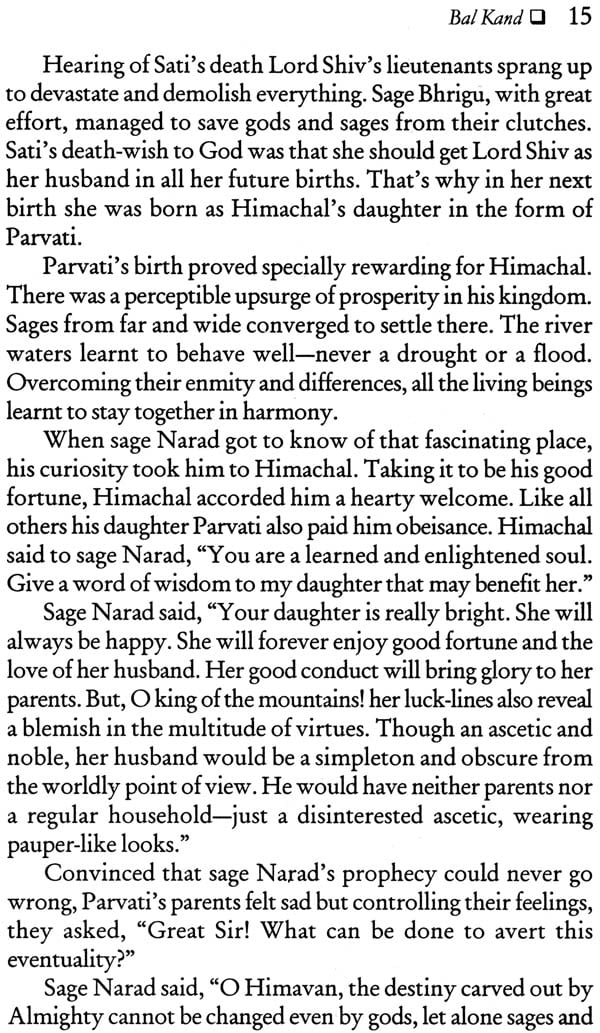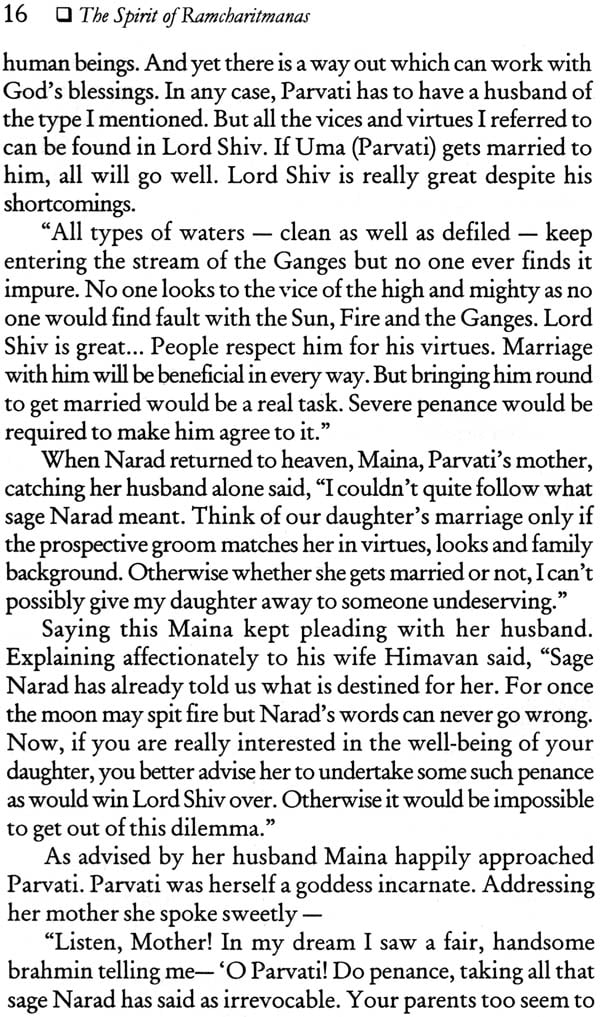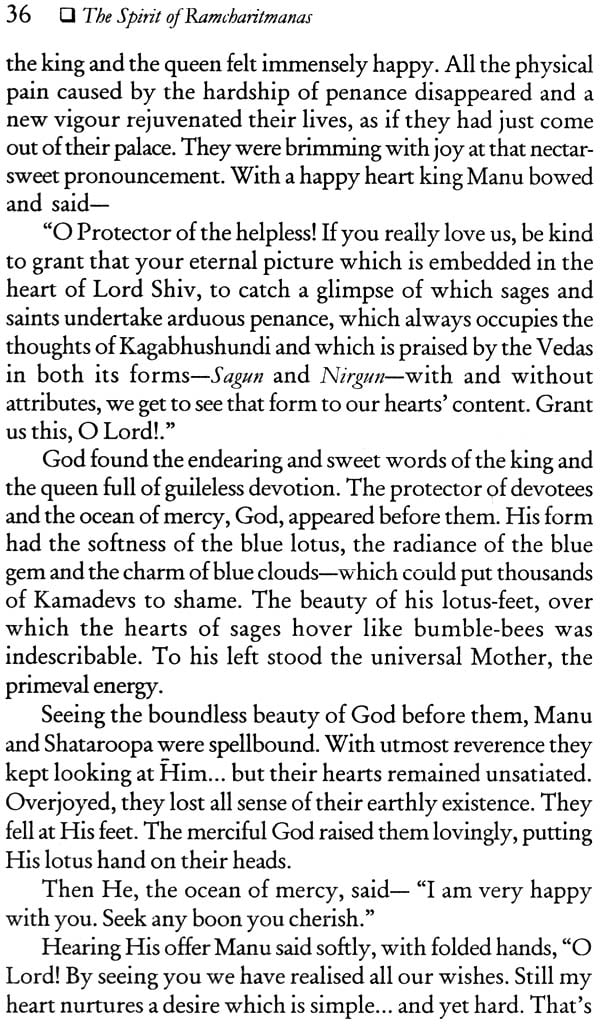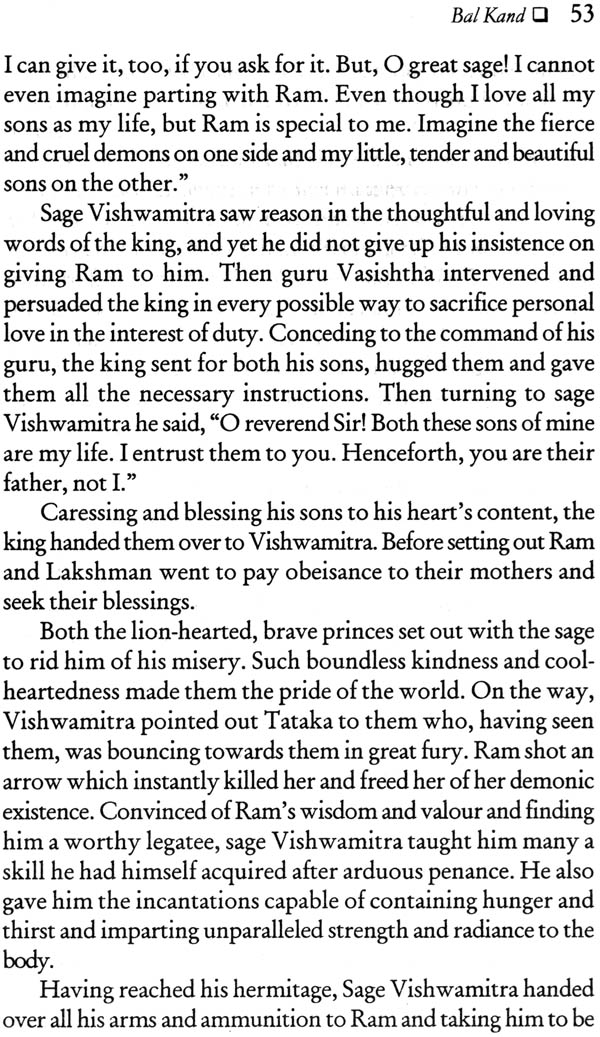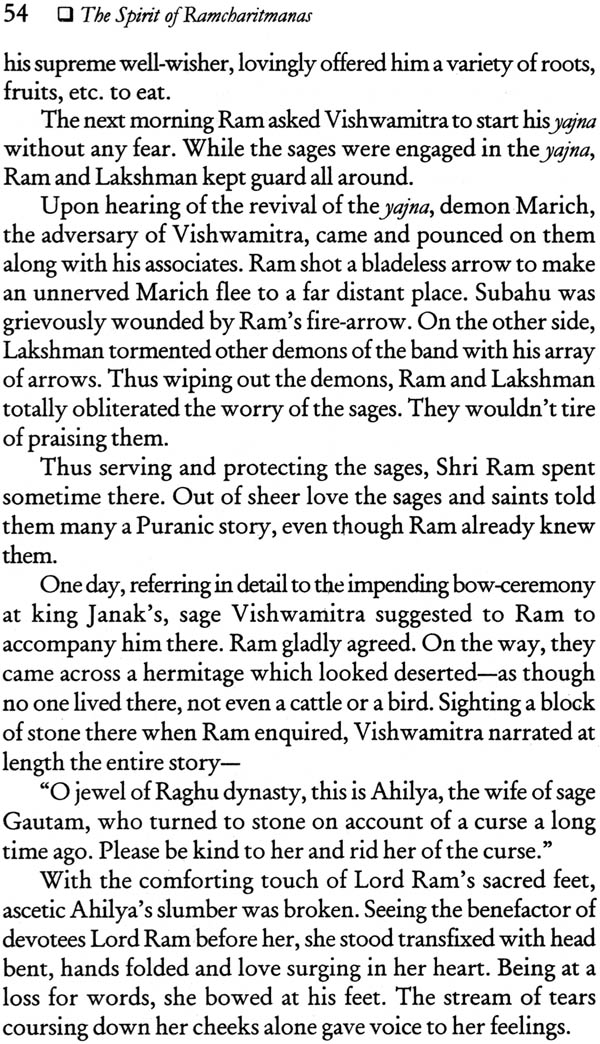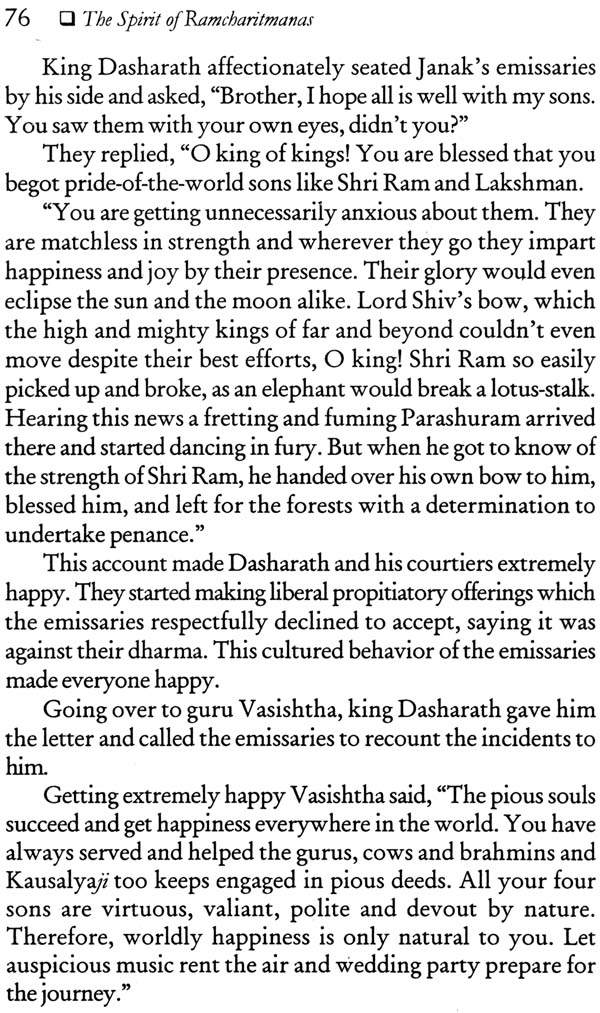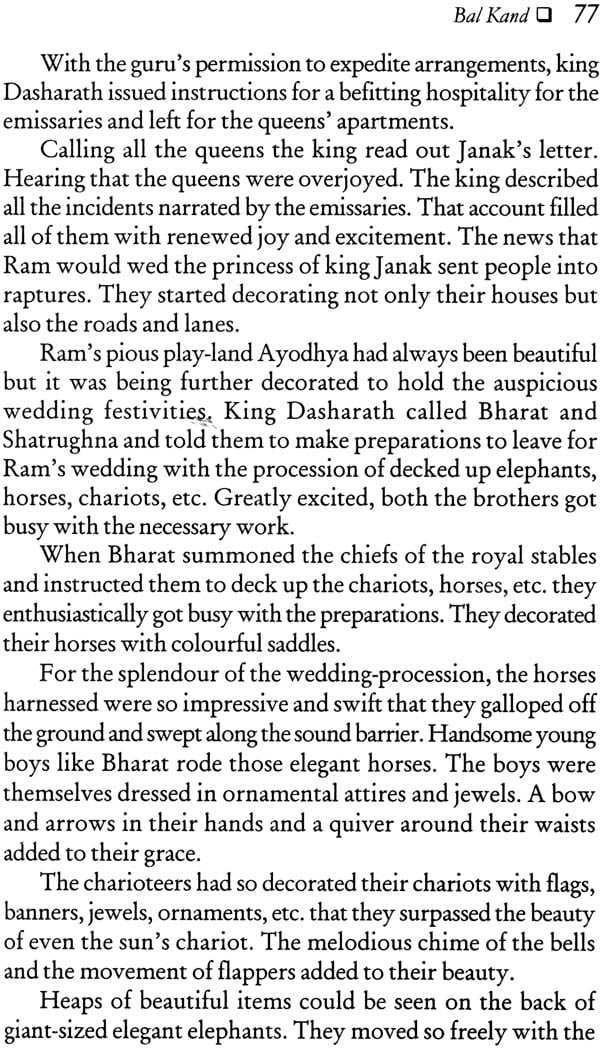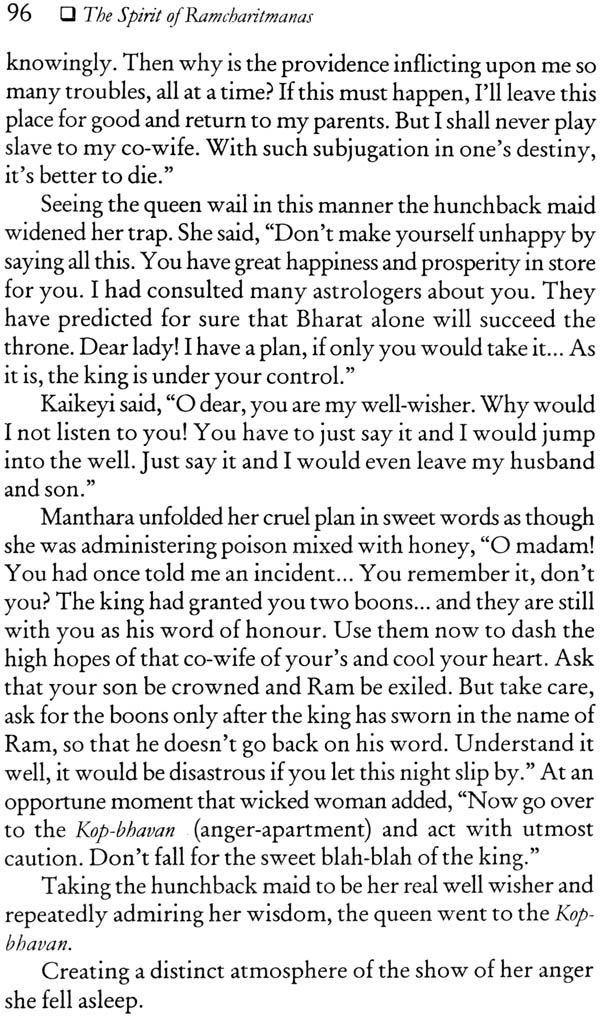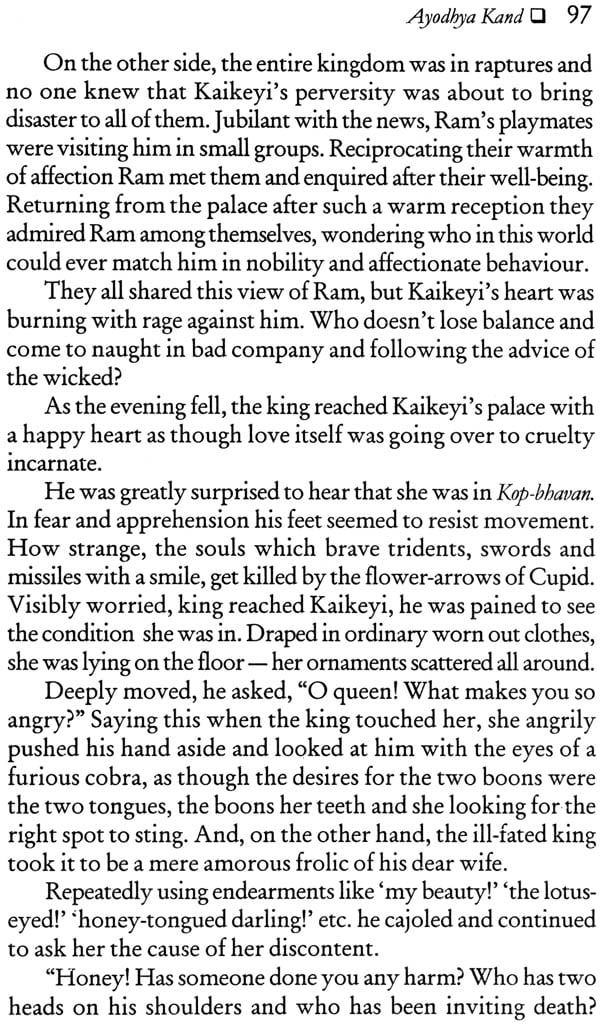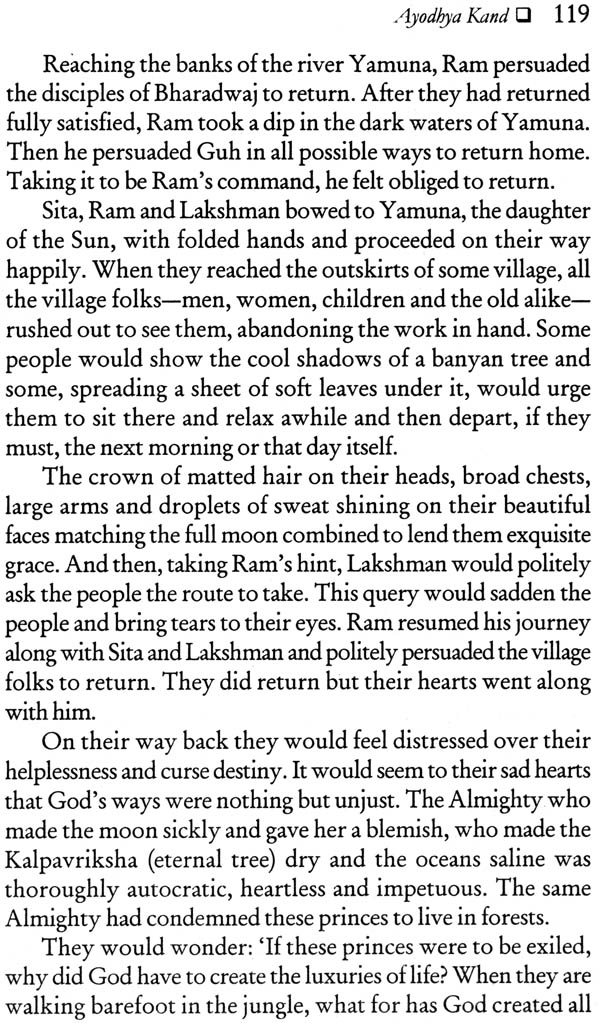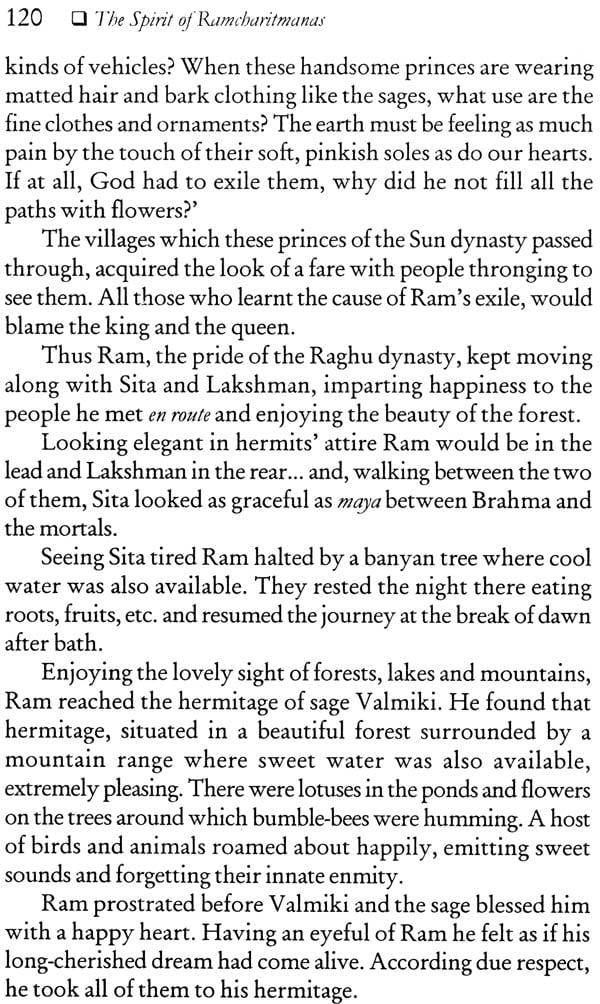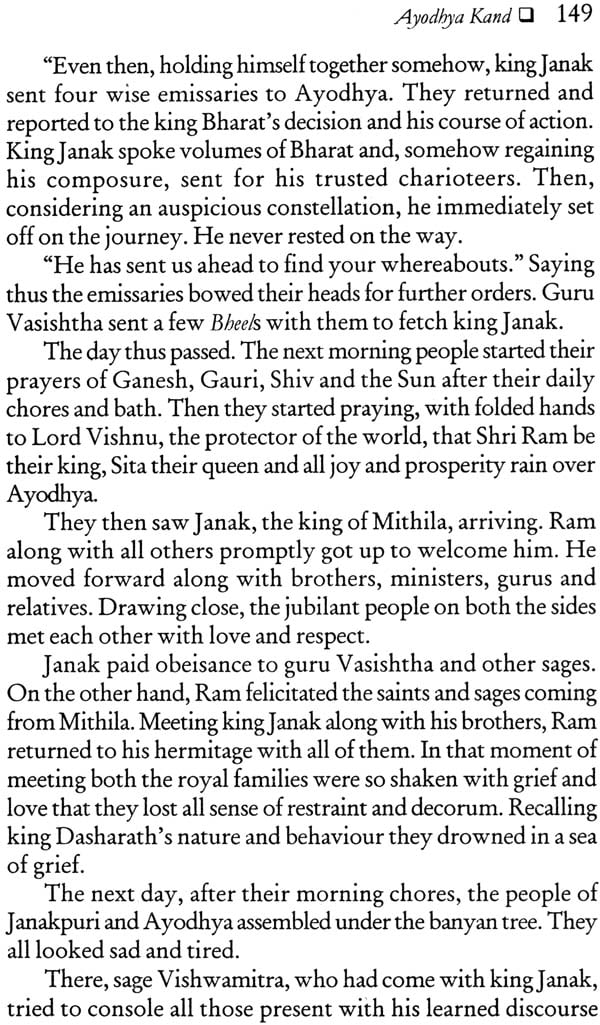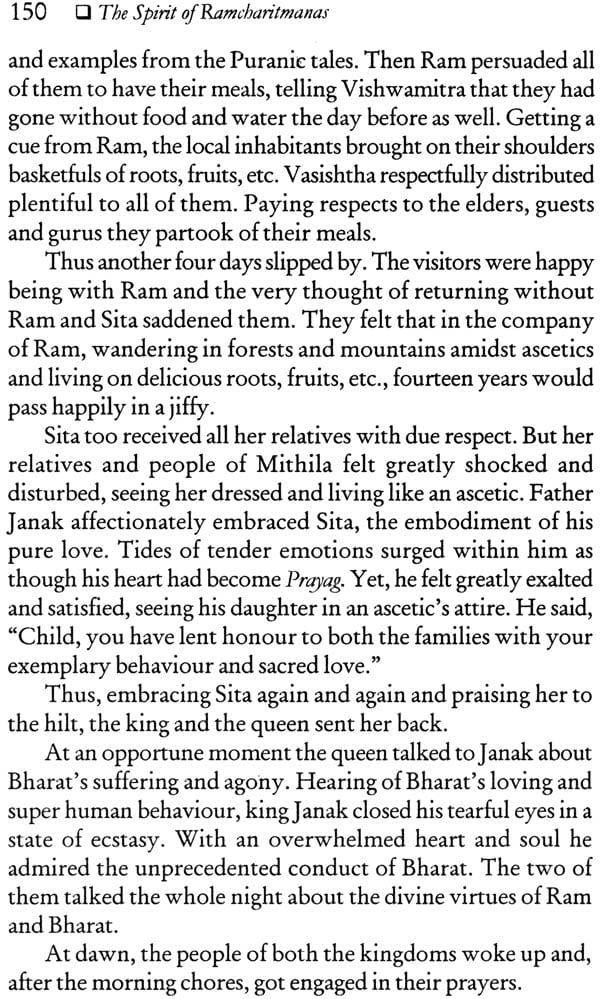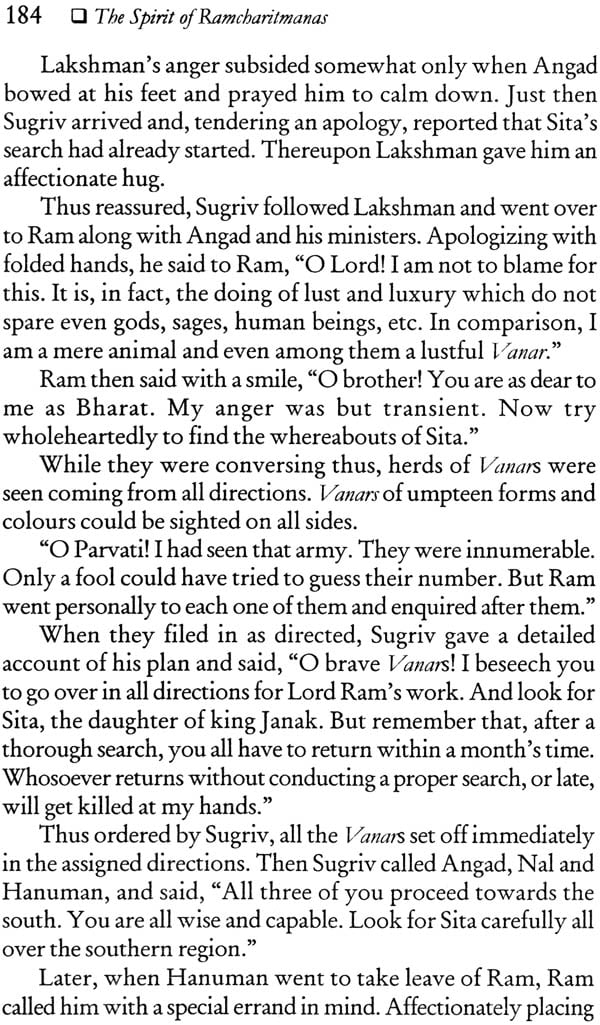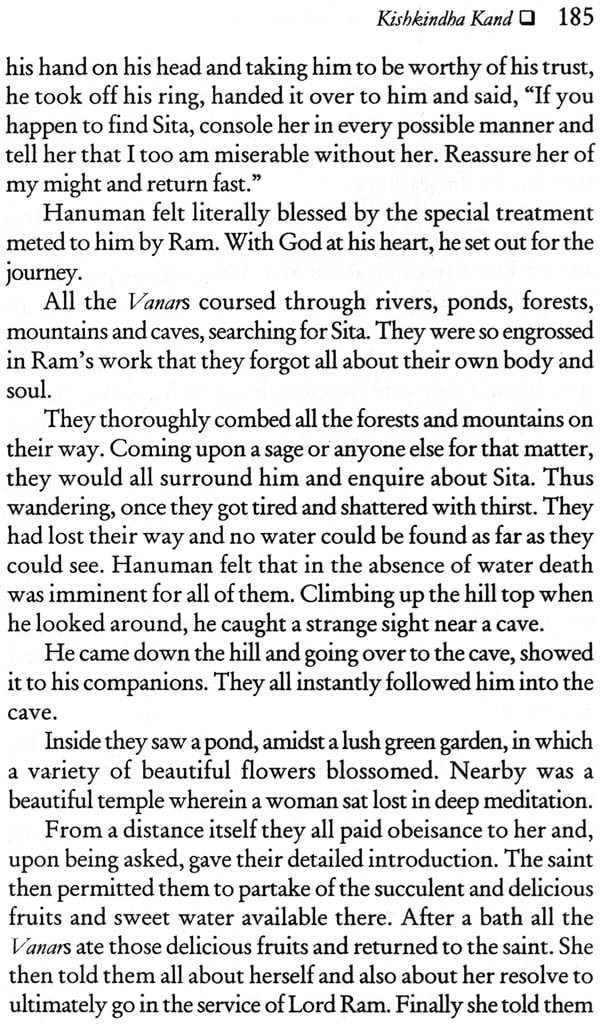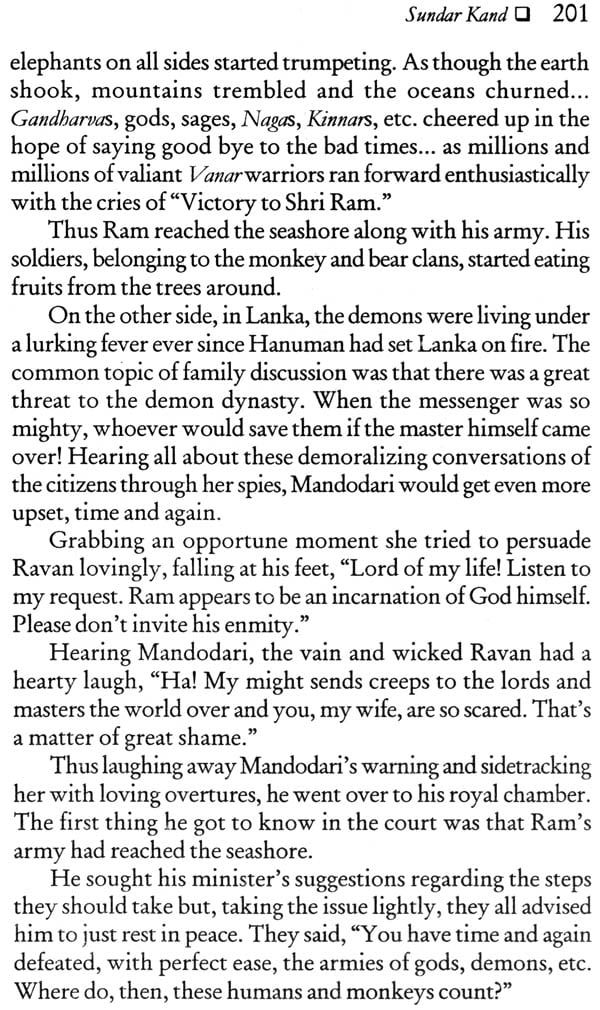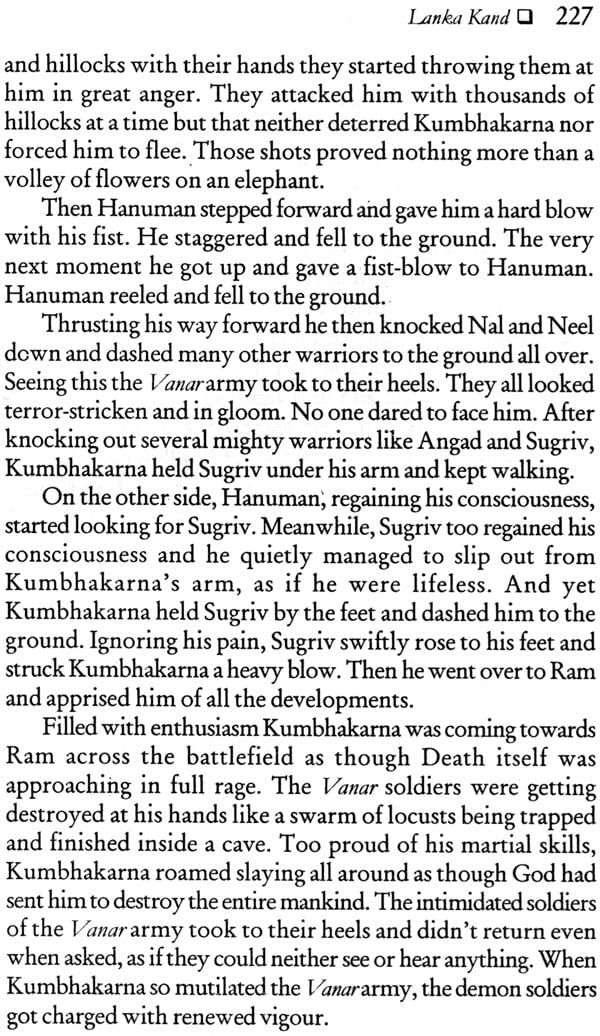
The Spirit of Ramcharitmanas
Book Specification
| Item Code: | NAK594 |
| Author: | Aruna Sitesh |
| Publisher: | Akshara Prakashan, Ahmedabad |
| Language: | English |
| Edition: | 2009 |
| ISBN: | 9788188643264 |
| Pages: | 301 |
| Cover: | Hardcover |
| Other Details | 9.0 inch x 6.0 inch |
| Weight | 540 gm |
Book Description
Tulasidas's Ramcharitmanas enjoys the place of Pride among the tale of Lord Ram not only in Indian language but also in several languages of South East Asia. It is venerated not only by ram's ardent devotees but also learned scholars who admire it for its poetic beauty and ethical import.
For a long time the need was being felt for an abridged version of Ramcharitmanas for a growing section of the present-day reader, both in India and abroad, Characterised by Preference for a reader, both in India and abroad, characterised by preference for English language and shortage of time.
This volume amply fulfils that need. Being based on a tried and tested abridged edition in Hindi, namely Manes Mangal, it presents the gist of the original Ramcharimanas.
The success of The Sprit of Ramcharitmanas lies in the prudent pruning of the original in a manner that retains the flavour of the original and keeps intact the moral, ethical, literary and aesthetic content of Manas which lend it the semblance of a scripture.
Dr. Aruna Sitesh (1945-2007) a teacher of English literature and a well known Hindi writer, was the Principal of I. P. College, Delhi, University of Delhi (1997-2007), a Fulbright fellow at the University of Chicago (1991-92) and Visiting Scholar at Rockefeller Foundation Study Center, Bellajio, Italy (1993) she edited Pratibha India for 24 years and was one of the Founder Trustees of Sneh Bharti Charitable Trust.
Widely published in literary journals and periodicals, she authored six short story collections in Hindi and Published as many critical studies and edited works in English. Recipient of many honours and awards including the Kriti Samman, Sahastrabdi Hindi Sewa Samman, Mahadevi Varma kriti Samman and Indira priyadarshni award.
Her story Teesari Dharati is anthologised among the immortal Hindi short Stories currently under publication by Sahitya Akademi.
My abridged version of Ramcharit Manas, with the explanationary rendering in intelligible Hindi prose, was published as Manas Mangal, in 2002. It was warmly received by readers and critics alike for providing accessibility to an epic venerated for several centuries, and yet forgotten by many people because of certain practical constraints. Truly, While Ramacharit Manas has acquired the status of a scripture in our country, especially in the vast Hindi region, it seldom leaves the pedestal it is placed upon. People especially those belonging to the new generation, rarely read it.
In fact, I myself read it at a fairly late stage in life. Like most others, my problem was the dialect of its poetry and, of course, the necessary will to find time for going through such a voluminous work. And yet, form time for going through such a voluminous work. And yet form time to time, I kept listening, from common people and the learned ones alike, hundreds of its quotations suiting practically all occasions in life and could not help admiring their precision, poetic beauty and ethical import.
Late though, luckily the moment arrived when I decided to read, albeit with some help for understanding its Avadhi the language Ramacharit Manas is composed in. And the more I read, I felt captivated. Having read it once, I decided to go through it all over again.
And then, I wondered why is it that people do not get attracted to it now! How is it that people increasingly the ones belonging to the new generatin, don't get the motivation and determination to read such an important representing their own cultural heritage.
Its volume and the dialect apart I felt there was something related to its idiom too, which meant for the audience of the region it was addressed to, I. e. Eastern Uttar Pradesh of the sixteenth century. Many of its similes and metaphors operated on a wavelength which did not correspond with the Generation which has learnt to dwell on an entirely different plane.
My earnest desire, say determination, to carry the messages of Ramcharitmanas to the modern generation drove me to a compromise mode. The first requirement, an unavoidable prerequisite, seemed to me was the only answer which, I was afraid, could raise a few eyebrows, especially of the hardcore religious zealots who venerated Manas like some scripture. But, I felt, my good intention of taking the real spirit of this great work to a wider readership would convince and calm them.
The next step related to the extent to which the text could be curtailed and the passages which could be omitted. Even though meeting half way is an accepted golden norm, I felt the extent of abridgement to chance and decided to concentrate on the quality of the work. My main concern was to retain, or if possible to highlight, the moral, ethical and aesthetic content of this epic. Keeping that in mind I decided to eliminate the passages which tended to go beyond making a point and appeared repetitive. Similarly there were prayers, many a time by gods and demi-gods, in praise of Lord Ram every time he accomplished something great – be it the wielding of Shiv's bow in Janak's court or the slarying of Ravan in the battlefield.
In the process of dropping the repetitive narrations and extra lengthy description of places, palaces, people and landscapes, I came across certain side stories which, though used to make a certain side stories which, though used to make a certain Point, were totally unsuited to modern intellectual studarsh, Ram's punishment to Indra's son, Jayant in the guise of a crow, in Aranya Kand, and enlightenment of Kagabhushudi when he entered child Ram's mouth, in Uttar Kand, are the events in example. I felt convinced that no injustice would be done to ramcharit Mnas if suh passages were dropped.
With such a prudent pruning what I achieved was a near fifty percent reduction in the text. While some of my friends prompted me to shed some more of it, say, to around one third of the original text, I decided to stay put to the bulk I had reached primarily for fear of tampering with the quality of the text.
Frankly, in several cases, I myself cannot explain why a certain Portion, the or couplet, was retained and way the other was dropped. It had to be a spot decision, maybe under some impulse, but for which one would have got trapped into never ending arguments at each step. I accept, the decision with regard to retaining and or dropping the passages so treated maybe with a certain element of Subjectivity was entirely mine but solely with an eye on keeping in tack the moral, ethical, literary and aesthetic flavours of Tulasida's epic. It is not unlikely that if I redo the same exercise, it may end up with a somewhat different version – I mean somewhat. And it goes without saying that is someone else takes up this exercise, the final outcome may well be significantly different.
Similarly, there are certain references without which Manas would gain wider acceptability without the slightest loss either to the story of Lord Ram of the poetic stature of the text. One such controversial Chaupayee (a two line composition) refers to women and the low caste people in slight vein. While hte ardent admirers of Ramcharti Manas find no fault with it, arguing the fact that comment in question is in no way a directive from the poet because that is something stated by a moronic character i.e. the ocean, in the rupak (metaphor) crated by Tulasidas. But then it is equally true that it sounds unwarranted and unnecessary. The versatile poet could very well find some other dimile to highlight the imprudence of the character he fad visualized. Al said and done, all such controversial references would only enrich the text by their absence.
Manas Mangal, thus embodied the essence of the Ramacharit Manas in a handy and manageable form, highlighting its moral and ethical content and retaining its literary and poetic beauty. I am glad, my effort was rewarded in the sense that while it served awider and appreciative readership it did not hurt the sentiments of those who took the whole text as something sacrosanct. My success and joy were shared by my life, (now late) Dr. Aruna Sitesh, who prompted by a few readers decided to render its explanatory prose into English for those who, though interested in Ramcharit Manas and the Story of Ram, were not so conversant with Hindi. What she drafted got delayed on account of her trip to Australia and then her personal health Problems.
As it was probably destined, it came back to me to organize it and present it in its present form. I hope it will give a fairly comprehensive idea of saint Tulasidas's approach to Ram's story and his enlightened approach to pass on its sublime messages to the society.
| Ramachritmanas : The pride of Hindi Literature | vii | |
| Preface | xix | |
| 1 | Bal Kand | 1 |
| 2 | Ayodhya Kand | 91 |
| 3 | Aranya Kand | 159 |
| 4 | Kishkindha kand | 177 |
| 5 | Sundar Kand | 189 |
| 6 | Lanka Kand | 207 |
| 7 | Uttar Kand | 249 |
| Glossary | 277 |
